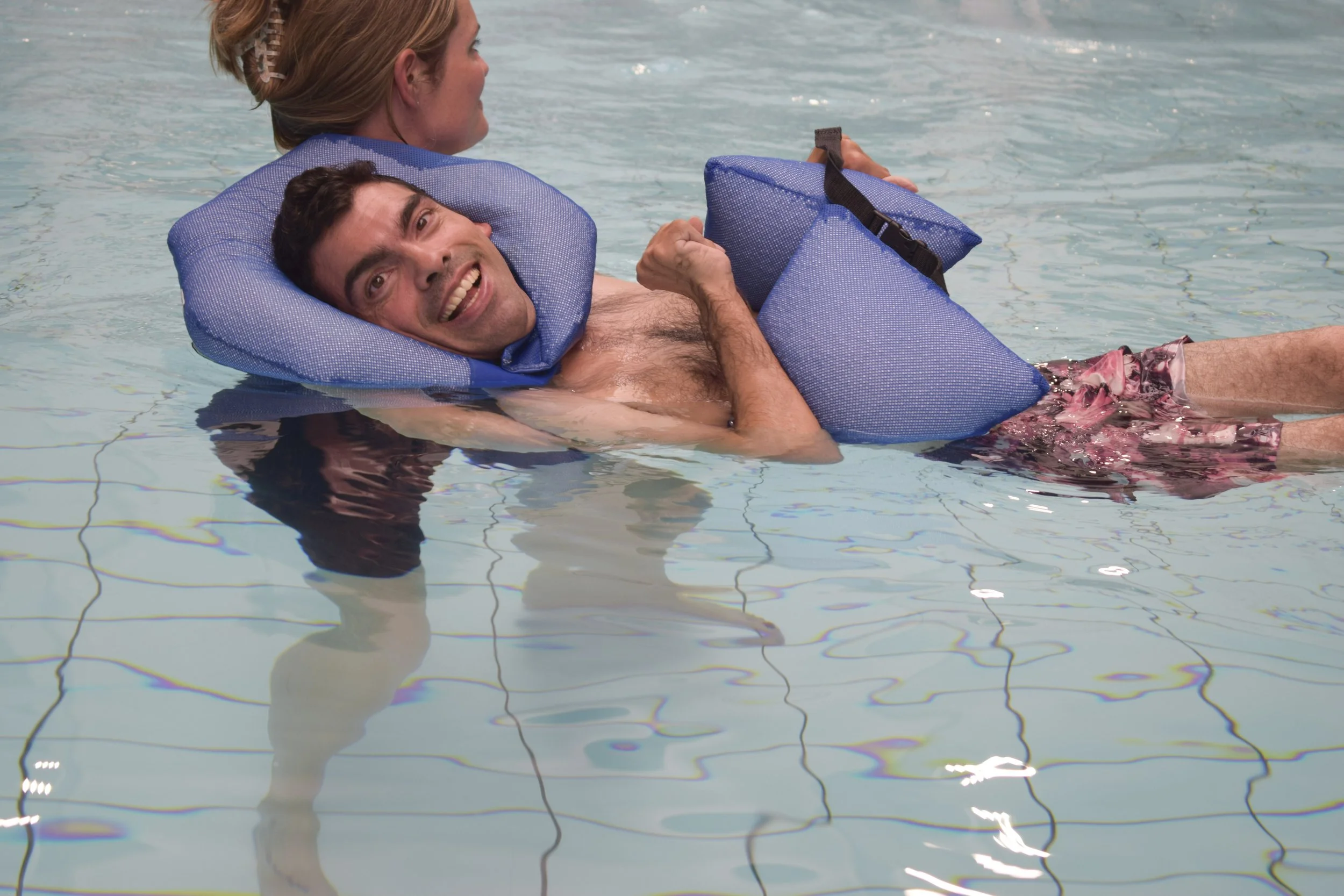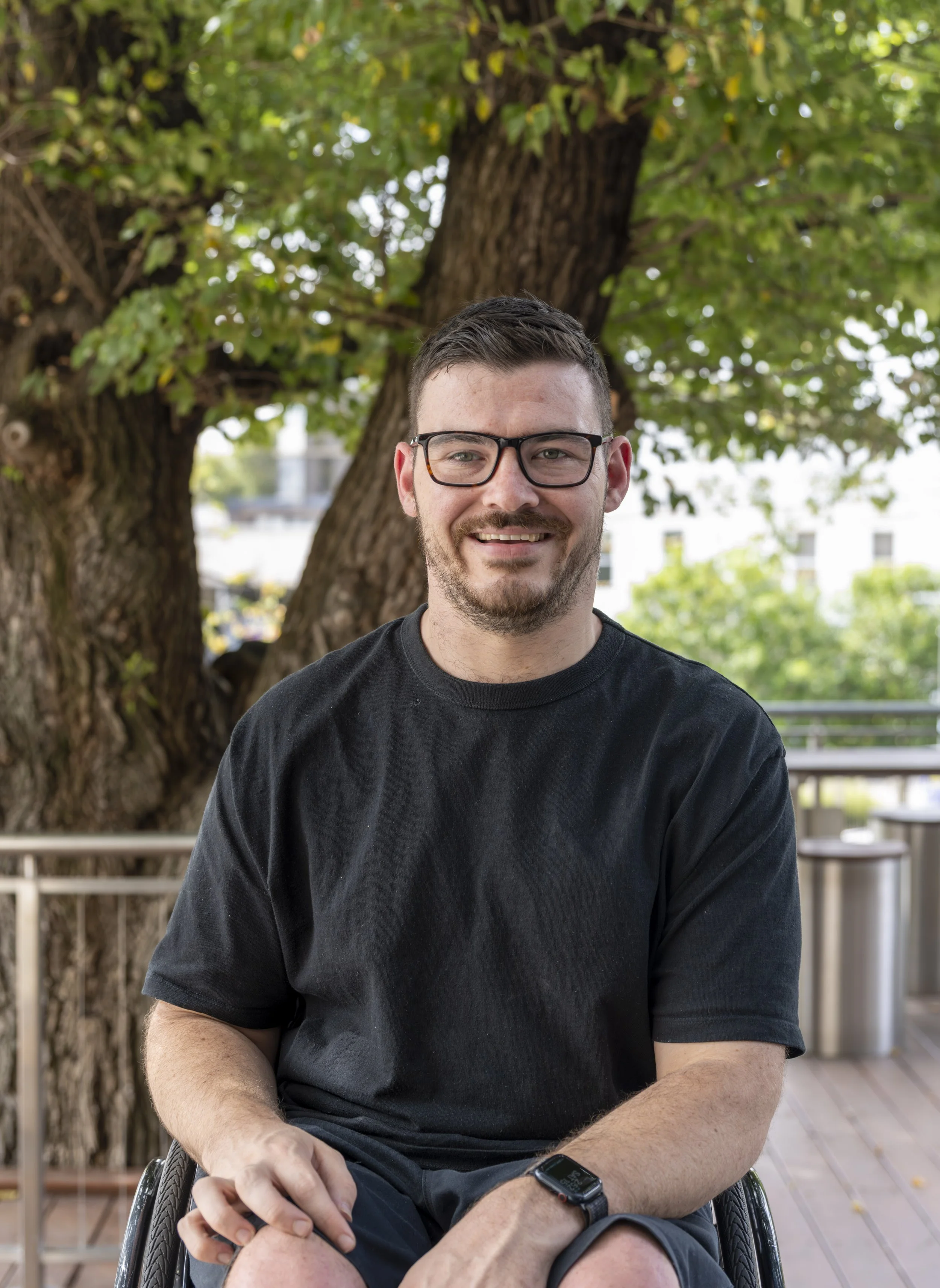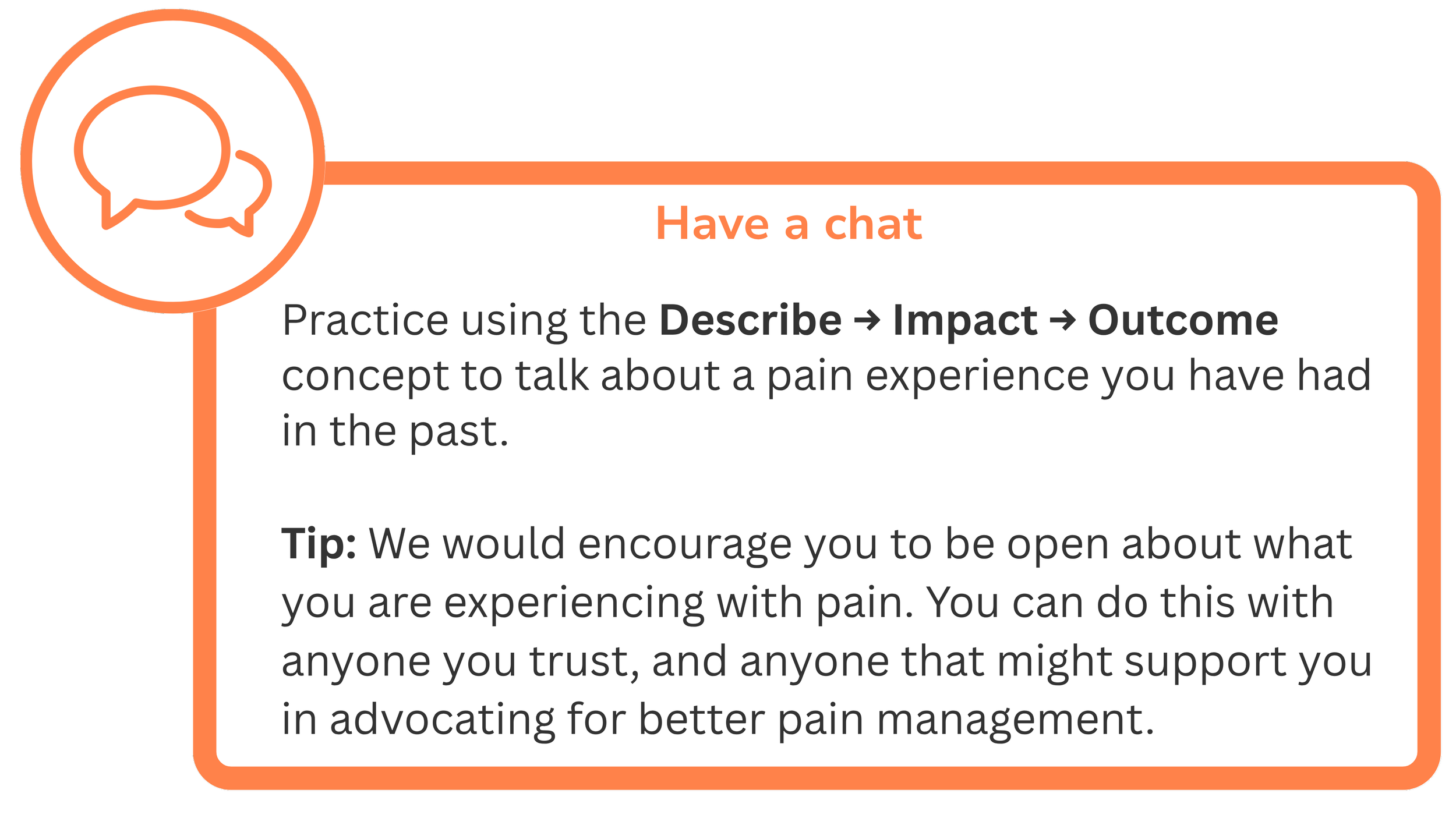
Looking after your body
The aim of this section is to work out how your body is responding to exercise.
This section focuses on pain and fatigue, and the experiences and knowledge that adults with cerebral palsy want to share.

Fatigue
Fatigue is common for adults with cerebral palsy.
Everyone experiences it differently but it can include things like:
Cognitive fatigue: Fatigue that affects your brain and thinking. Like having more difficulty concentrating or doing tasks
Whole body tiredness
Muscle fatigue: Tiredness in certain muscles while you exercise or after you exercise
They are often connected - when your brain is fatigued, it might be more difficult to use your muscles.
Fatigue - Frequently asked questions
-
Muscle fatigue: When you’re trying a new physical activity, or getting back into it after a break, some muscle soreness and tiredness is normal both during a session and in the day or two afterwards.
Muscle fatigue might feel like soreness or pain when using the muscle, tightness, or an aching feeling.
-
Muscle fatigue after exercise usually lasts a few days. It should gradually improve. If it takes longer than a few days, or stops you from doing other activities that you want or need to do, then the exercise might have been too hard for your muscles. You might need to do a little less next time.
E.g. if you go to the gym and your legs are too sore to walk later that day, this might be a sign that you need to reduce the gym program in some way and build up a bit more gradually
-
You do not need to avoid muscle fatigue, in fact feeling muscle fatigue is a good sign that you have worked your muscles hard and they will respond by getting stronger over time.
However, if the feeling is unpleasant or interferes with your day, you can adjust your program to reduce or eliminate the muscle fatigue.
Managing fatigue
As an adult my relationship with exercise requires a balance of doing things that maintain or improve my function (therapy) and doing things I enjoy (sports).
I need to make sure I have the energy to do both.
- Tate
When starting a new activity it can be really common to feel extra tired throughout the week.
As an adult, you might also be juggling lots of other activities or responsibilities.
Starting a new activity might require some planning around how you think fatigue might affect you.
Ideally, fatigue shouldn't negatively impact function or should be able to plan around it.
For example, if you want to push yourself at the pool you may need to plan a quiet afternoon or quiet next day
The key things to remember are:
Don’t push through your fatigue
Let people know
Be realistic with what you can achieve
You’re building a rhythm not routine
‘The 5 Ds of time management’ is one method that has helped members of our team to manage their fatigue across a week.
Do the task - Because you want to, can’t do the other D’s or you have to be the one to do it.
Do the task but with some adaptation, for example assistive equipment
Delegate the task - Ask someone else to do it
Defer to task - do it later
Drop the task - If you don’t want to, or can’t do it

Pain
Pain is not something you must endure.
You do not need to push through pain.
There are steps you can take to help manage pain.
Many of us grew up with the saying ‘no pain, no gain’.
The idea that you must endure pain to achieve success or improvement.
We want you to know that this is not the case.
What we’ve learnt about pain…
“I struggle with the words to use around pain. I think some health professionals need to be better at not dismissing pain when it is assumed to be muscle fatigue or mild discomfort even if that is the case”
“I started to get pain that just felt wrong to push through, I was nervous to ask ‘can I go back to the last weight’ but now I just say it. It took a lot of practice to feel comfortable raising these things”
“Getting knee pain in the gym was my first experience of having to speak up about pain. My EP was very open to talking about it and problem solving together. Now I have returned to the gym but we took it slow and carefully”
“Sometimes with the pain I can’t concentrate on what people are saying, but on the outside I look fine so they just think I can keep going”
“I often struggle when someone asks me to rate my pain on a scale of 1 to 10. My mind goes to all the other times I have experienced pain and how what I think of pain being a 4 might be very different to the person who is asking me.”
“Our responses to pain can often be dynamic, and I think that physiotherapists and other healthcare professionals should be prepared to actively listen to the interests of young adults in this regard.”
Pain - Frequently asked questions
-
“It is not the case that you only make gains if feeling pain
You’re more likely to stick to a physical activity if it doesn’t hurt and your pain is managed.”
-
“It's not an all or nothing approach, it’s OK to adjust and monitor and check in on program
What are the parameters/indicators for too much for you?”
-
“Not really. Some types of pain, like muscle soreness after exercise are quite common, because the muscles are being worked. But pain is an individual experience. If it is bothering you or you are unsure about it, then it is worth checking in with someone about it.”
-
“This is not OK. Is there someone else that you could speak to about it, or someone you trust that could help advocate with you? You could try using the Describe - Impact - Outcome concept to plan your conversation.”
Reporting and managing pain
Many adults with cerebral palsy experience pain throughout their life that interferes with their activities.
Pain is a very personal experience.
This can make it hard to work out when to speak up, and how to talk about it.
The way you experience and report pain will be different to the next person.
This can make it difficult for people around you to see when you are in pain or how much pain is affecting you.
Because of this, we encourage you to talk about and report any pain you are experiencing with physical activity.
How you and your team manage pain will depend on the type of pain you have, the impact it is having, and the outcome you are hoping for.
Some of the common ways to manage exercise pain might be
Adjusting and monitoring the program
Ceasing particular exercises
Seeing a physio or GP for advice or medication
To help you to have these conversations about pain, you can think about describing the pain, describing the impact and describing what you need or want the outcome to be.
What pain are you experiencing?
How would you describe the type or location of the pain?
Is it increased or abnormal for you?
Is it pain that feels ‘not okay’ for you?
What impact does the pain have on you?
How is the pain affecting you or interfering with your activities?
How acceptable, or not, is this impact to you?
What is your desired outcome?
Do you want someone (e.g. physiotherapist) to problem solve with you?
Do you want information on whether this pain is 'okay' or not?
Do you want strategies for minimising and managing the pain?















